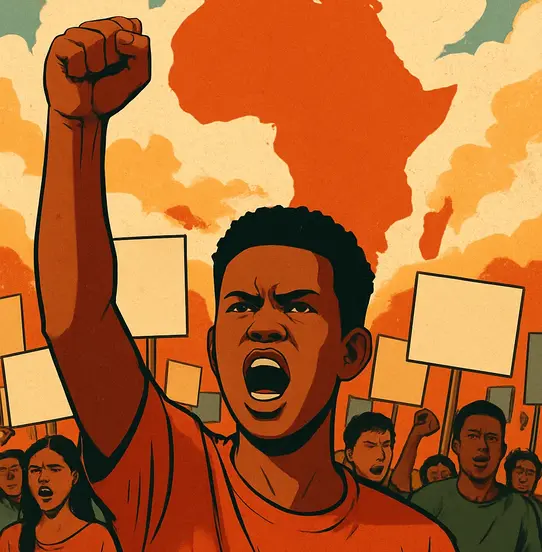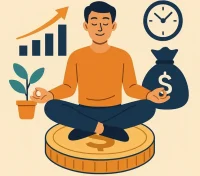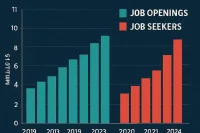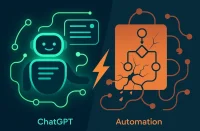Explosive Gen Z protests are sweeping across Africa
Explosive Gen Z protests are sweeping across Africa as frustrated young people, largely leaderless and coordinating through social media, take to the streets from Morocco to Madagascar demanding fundamental change. This wave of youth-led movements that began in Asia has now reached the African continent, creating a powerful force for political and economic transformation.
The protests represent a new form of political activism where digital natives harness social media platforms to organize decentralized, leaderless movements that challenge traditional power structures. These movements are not simply generational conflicts but represent a deeper breakdown in the social contract between citizens and their governments.
The Asian Gen Z protest movement that inspired Africa
The current wave of Gen Z protests in Africa follows a pattern established in Asia, where young people have successfully ousted governments and demanded accountability. Nepal saw the highest-profile protest with mass youth-led demonstrations that ousted the government, with scenes of parliament buildings being set alight viewed around the world. These demonstrations were reminiscent of uprisings in Bangladesh in 2024 and Sri Lanka in 2022.
Gen Z protests also erupted in the Philippines amid anger over political corruption, as well as in Indonesia and Taiwan, where young people protested against perks afforded to politicians. These movements shared common themes of economic grievances, political disenfranchisement, and frustration with elite corruption.
Kenya: The pioneer of African Gen Z protests
In many ways, Kenya was actually ahead of the curve, with mass youth-led protests erupting last year, preceding the high-profile movements in Nepal. The largely decentralized protests during the summer of 2024 under the label “Reject Finance Bill 2024” were triggered by the government’s proposed tax hikes, but they also reflected underlying frustration at the cost of living, inequality, poor economic opportunities, and governance issues.
The demonstrations were massive and even saw some protesters storm the Kenyan Parliament, prompting President William Ruto to eventually back down and scrap the controversial bill. However, with many of the underlying conditions unresolved and anger at the deaths of protesters during last year’s demonstrations, the movement remains primed to flare up again with the right trigger.
In June 2025, protests erupted again following the death of a blogger in police custody, demonstrating the ongoing tension between the government and young people demanding change.
Gen Z Demands Change
From Kenya to Nepal, young people are reshaping politics, economies, and the job market. Employers must adapt to a generation that values fairness, opportunity, and impact. Post your job on WhatJobs and connect with the new generation of changemakers.
Post a Job Free for 30 Days →Madagascar: Successfully ousting a leader
Madagascar has perhaps gained the most attention among the recent Gen Z protests in Africa, even mirroring Nepal’s success in ousting their leader. Gen Z protests broke out on the island of more than 30 million people in late September, initially triggered by chronic water shortages and power outages, but quickly snowballed into wider frustration at the government of President Andry Rajoelina.
His efforts to quell the protests, including replacing his entire government and asking for a year to solve the country’s many issues, were not enough. Protesters were demanding his resignation and an apology for the at least 22 people killed during the unrest. With members of the armed forces joining protesters on the streets over the weekend, Rajoelina, still refusing to resign, claimed a coup attempt was underway and was reportedly flown out of the country by the French Air Force.
On Tuesday, Madagascar’s parliament voted to impeach him, ignoring a dissolution decree that he’d issued shortly before the vote. The military now says it has taken power, adding that it would manage a transition lasting up to 2 years alongside a civilian government before new elections could be held.
Morocco: The Gen Z 212 movement
In North Africa, Morocco is also being gripped by Gen Z protests dubbed “Gen Z 212” after the country’s telephone dialing code. Driven by frustration at underfunded healthcare and educational facilities, the movement was galvanized by the death of several women last month in a maternity ward. Protesters pointed to the billions being spent in preparation for Morocco co-hosting the 2030 World Cup as evidence of misplaced priorities.
The protesters have largely directed their anger at the elected government, calling for the prime minister’s resignation rather than at the Moroccan king. In fact, the leaderless Gen Z 212 collective published a letter to King Mohammed VI, urging him to dismiss the government, intervene against corrupt officials, push forward with reforms, and release detainees linked to peaceful protests.
In a public address after the near-nightly protests, the king did not directly address the protesters and offered no indication that he’d sack the government or launch new corruption investigations. However, he did say that improving healthcare and education, as well as creating jobs for young people, would be a priority, adding that there did not need to be competition between social programs and flagship projects like the World Cup.
The power of digital native activism
These movements are drawing inspiration from each other, not least because of the use of the Gen Z label, but also because of shared symbols, most notably the pirate flag from the manga series One Piece, which has been adopted as a sort of unofficial symbol of the various movements from Madagascar to Nepal to the Philippines.
As so-called digital natives, Gen Z is well-versed in harnessing social media platforms like Discord, Instagram, and TikTok, allowing for more spontaneous, decentralized, and leaderless movements. This can often pose a challenge for governments, as there isn’t a clear leader to negotiate with, and the demands are sometimes more nebulous.
The fact that these decentralized protests are taking place through social media networks rather than established political parties or institutions also poses a challenge when governments are toppled, as what should come next is certainly a lot less clear-cut.
Why Africa is fertile ground for Gen Z protests
That Africa, the most youthful continent, is seeing a wave of Gen Z protests is no surprise. Looking at the population pyramids of Madagascar, Morocco, and Kenya, you can see how a big chunk of the population is young. Countries with large, digitally connected, youthful populations that are facing poor economic opportunities, inequality, and corruption provide fertile ground for Gen Z protest movements to spring up.
Madagascar, for example, is one of the world’s poorest countries, with three-quarters of the population below the World Bank’s poverty line. Morocco’s youth unemployment rate is above 35%, and Kenyans have felt squeezed by austerity and rising taxes aimed at paying off the country’s substantial national debt.
Existing issues and inequalities have also been exacerbated by events like the pandemic and the war in Ukraine. All of these countries face more potential turmoil with the Trump administration’s ending of the African Growth and Opportunity Act, which threatens exports and jobs.
The future of Gen Z protests in Africa
There’s a decent chance that the Gen Z protest movements will continue to spread in Africa and perhaps beyond. Gen Z protests have already hit the streets of Peru, for instance. Places like Cameroon, Côte d’Ivoire, and Uganda—youthful, unequal countries where aged presidents are seeking to extend their hold on power at recent or upcoming elections—could be prime targets for Gen Z protests to spring up.
The big question, though, is whether the promise and hope espoused by so many protesters can actually lead to effective and lasting change. The situation in Madagascar is changing and updating fast, with more and more news outlets beginning to report on it.
The challenge of post-protest governance
One of the key challenges facing these movements is what comes after the protests succeed in ousting leaders. The decentralized, leaderless nature of these movements, while effective for organizing protests, can make it difficult to establish stable governance structures afterward. This is particularly true in countries where traditional political institutions have been weakened or discredited.
The military’s involvement in Madagascar’s transition, while providing some stability, also raises questions about the long-term democratic prospects of the country. The two-year transition period announced by the military will be crucial in determining whether the country can establish a more responsive and accountable government.
The role of social media in organizing protests
Social media has played a crucial role in organizing these protests, allowing young people to coordinate across vast distances and share information in real-time. Platforms like TikTok and Instagram have been particularly effective in spreading messages and mobilizing support, while Discord has been used for more detailed coordination and planning.
However, the reliance on social media also makes these movements vulnerable to government crackdowns, including internet shutdowns and social media restrictions. Governments have increasingly used these tactics to disrupt protest movements, as seen in various countries around the world.
The economic roots of discontent
The economic grievances driving these protests are deeply rooted in structural problems that have been exacerbated by recent global events. The COVID-19 pandemic, the war in Ukraine, and rising global inflation have all contributed to the economic pressures facing young people in these countries.
In Kenya, the government’s attempts to raise taxes to pay off national debt have been met with fierce resistance from young people who feel they are being asked to bear the burden of economic mismanagement. In Madagascar, chronic shortages of basic services like water and electricity have made daily life difficult for ordinary citizens, while the government has been seen as unresponsive to these basic needs.
The international dimension
These protests are not happening in isolation but are part of a broader global movement of young people demanding change. The use of shared symbols like the One Piece pirate flag and the adoption of the “Gen Z” label across different countries shows how these movements are drawing inspiration from each other.
The international media attention on these protests has also helped to amplify their message and put pressure on governments to respond. However, this attention can also be a double-edged sword, as it may lead to increased government repression in some cases.
The role of traditional media and information
The way these protests are covered in the media can significantly impact their success and the government’s response. Ground News analysis shows that different media outlets approach these stories with varying degrees of bias, with left-leaning sources emphasizing the youth-led nature of the protests, while right-leaning sources use more dramatic language about political chaos.
This media coverage can influence both domestic and international perceptions of the protests, affecting everything from government response to international support and intervention.
The challenge of maintaining momentum
One of the key challenges facing these movements is maintaining momentum after initial successes. The decentralized nature of the protests, while effective for organizing, can make it difficult to sustain long-term campaigns for change. Without clear leadership structures, it can be challenging to negotiate with governments or establish alternative governance systems.
The success of these movements will depend on their ability to transition from protest movements to sustainable political change. This will require building coalitions with other groups, developing clear policy proposals, and establishing mechanisms for ongoing engagement with the political process.
The future of youth activism in Africa
The Gen Z protests in Africa represent a new form of political activism that is likely to continue shaping the continent’s political landscape. As the continent’s population continues to grow and become more connected, the potential for youth-led movements to drive change will only increase.
However, the success of these movements will depend on their ability to address the underlying structural problems that have given rise to the protests in the first place. This will require not just political change but also economic reform, improved governance, and greater opportunities for young people.
The global implications
The spread of Gen Z protests from Asia to Africa and potentially to other regions represents a significant shift in global politics. These movements are challenging traditional power structures and demanding greater accountability from governments around the world.
The success of these movements in countries like Madagascar and Nepal shows that young people can effectively organize and demand change, even in the face of significant government resistance. This could inspire similar movements in other countries facing similar challenges.
The role of international support
International support for these movements can play a crucial role in their success. However, this support must be carefully balanced to avoid appearing as foreign interference in domestic politics. The movements must maintain their authenticity and local character while potentially benefiting from international solidarity and support.
The challenge of building sustainable change
Ultimately, the success of these Gen Z protest movements will depend on their ability to translate their energy and demands into sustainable political and economic change. This will require not just ousting current leaders but also building new institutions and systems that are more responsive to the needs of young people and ordinary citizens.
The challenge is significant, but the energy and determination of these young activists suggest that they are up to the task. The future of many African countries may well depend on their success.
FAQs
Q: What are the main causes of Gen Z protests spreading across Africa?
A: The main causes include economic grievances, political disenfranchisement, poor economic opportunities, inequality, corruption, and frustration with government priorities. Young people are particularly affected by high unemployment rates, rising costs of living, and lack of basic services.
Q: How are Gen Z protests in Africa different from traditional political movements?
A: Gen Z protests are largely leaderless, decentralized, and organized through social media platforms. They use shared symbols like the One Piece pirate flag and coordinate across vast distances using digital tools, making them more spontaneous and harder for governments to control.
Q: Which African countries have seen the most significant Gen Z protests?
A: Kenya, Madagascar, and Morocco have seen the most significant Gen Z protests. Kenya’s protests began in 2024, Madagascar successfully ousted its leader in 2025, and Morocco’s Gen Z 212 movement is ongoing, focusing on healthcare and education issues.
Q: What challenges do Gen Z protests face in achieving lasting change?
A: Challenges include maintaining momentum after initial successes, transitioning from protest movements to sustainable governance, building coalitions with other groups, and addressing underlying structural problems. The decentralized nature can make long-term organization difficult.
Live example — user point of view
I was living in Nairobi when the Gen Z protests first erupted in Kenya in 2024. As a young professional, I had been feeling the economic squeeze for months—rising taxes, high unemployment, and a government that seemed completely out of touch with ordinary people’s struggles. When the “Reject Finance Bill 2024” movement started, I initially thought it would be just another protest that the government would ignore. But seeing thousands of young people take to the streets, many of them students and recent graduates like myself, gave me hope that real change was possible.
The most powerful moment was when protesters stormed the Parliament building. I was watching it live on social media, and I could see the fear in the politicians’ eyes as they realized they couldn’t just ignore us anymore. The government’s eventual decision to scrap the finance bill felt like a victory, but we all knew the underlying problems—corruption, inequality, and lack of opportunities—were still there.
When I heard about similar protests in Madagascar and Morocco, I felt a sense of solidarity with young people across Africa who were facing the same struggles. The use of the One Piece pirate flag as a symbol of resistance made me smile—it showed how our generation uses pop culture to create a sense of unity and purpose. Now, as I watch these movements spread across the continent, I’m hopeful that we can build a better future for Africa’s youth, but I also know that the real work of building sustainable change is just beginning.




